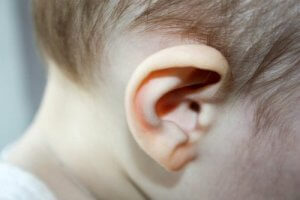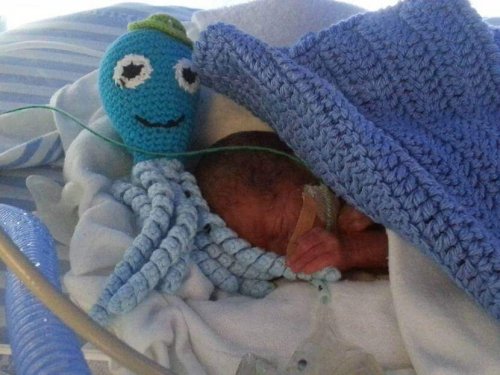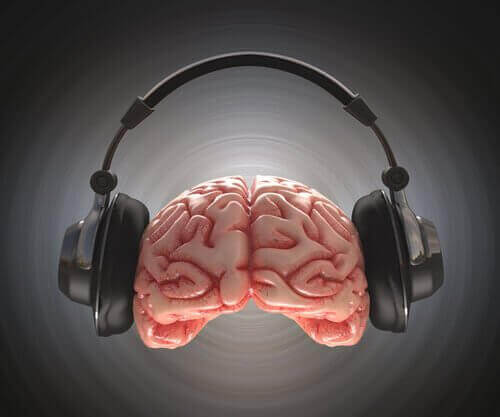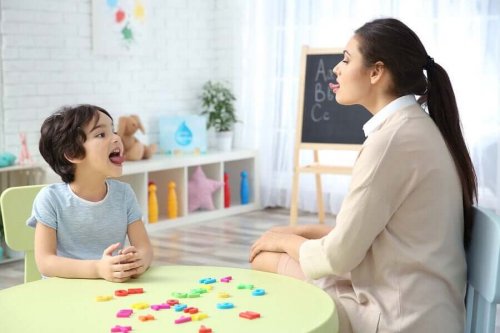Early Detection of Hearing Loss in Infants

For several years now, many countries have launched campaigns aimed at early detection of hearing loss in infants. This is a very serious health problem since it greatly impacts a child’s emotional development and language acquisition.
It’s also a source of major social interaction difficulties. The journal Annals of Pediatrics and Child Health states that:
From birth until the fourth year of life represents a critical period in which the process of language acquisition is optimal. Auditory information in this critical period is essential for morphological and functional characteristics of the cortical areas of language and hearing. They won’t develop properly in a sensory deprived child.
Data from the Spanish Pediatric Association
Deafness in newborns is rare. According to the Spanish Pediatric Association, 5 out of every 1,000 children born in Spain suffer from congenital deafness and 1 in 1,000 is profoundly deaf. The aim is to detect it before the baby is three months old to start treatment before they’re six months old.
In some cases, early detection of hearing loss in infants is even more important. For example:
- In premature and low birth weight babies.
- When there’s a family history of deafness.
- If the mother ingested certain drugs while pregnant.
- If there have been problems during childbirth or after birth.
What’s hearing loss?
Hearing loss is the term used for total or partial loss of hearing capacity. When a baby is born with this problem, it’s called congenital deafness.

How to detect hearing loss in infants
There are two ways of assessing newborn hearing: otoacoustic emissions and auditory evoked potentials. None of them causes discomfort in newborns.
Auditory evoked potentials is the most common. The doctors place headphones on the newborn’s scalp with sensors that emit sounds and pick up signals that reach the brain. In the case of otoacoustic emissions, a mini probe is placed in the ear canal. It collects the answers the ear produces when it hears sounds.

If the result is normal, the test ends and the medical professional only recommends observation during the infant’s first months of life.
Why congenital deafness occurs
- In half of the cases, doctors conclude that the cause is congenital, meaning it’s an inherited problem.
- The other 50% of cases are caused by environmental factors such as infections during pregnancy such as toxoplasmosis, rubella, syphilis, and so on.
- It can also be a consequence of the ingestion of toxic drugs during pregnancy, such as some antibiotics or diuretics, drugs for the treatment of malaria, and retinoic acid, among others.
- Another possible cause of deafness, although less frequent, is radioactivity exposure during pregnancy.
Treatment
After early detection of hearing loss in a baby, early intervention is vital. If detected before six months, the infant may develop their speech and language optimally, just like their peers. Therefore, this test is performed before three months of age. As stated earlier, the goal is to intervene before the baby is six months old.
Treatment after diagnosis of congenital deafness is the use of hearing aids, whether earpieces and cochlear implants. In parallel, it’s essential to work hand in hand with a speech therapist to stimulate oral development.

As you can see, this simple and safe test can help address serious problems that could hinder the baby’s development. Early detection of hearing loss in infants and its treatment are essential to the quality of life of children with congenital deafness.
For several years now, many countries have launched campaigns aimed at early detection of hearing loss in infants. This is a very serious health problem since it greatly impacts a child’s emotional development and language acquisition.
It’s also a source of major social interaction difficulties. The journal Annals of Pediatrics and Child Health states that:
From birth until the fourth year of life represents a critical period in which the process of language acquisition is optimal. Auditory information in this critical period is essential for morphological and functional characteristics of the cortical areas of language and hearing. They won’t develop properly in a sensory deprived child.
Data from the Spanish Pediatric Association
Deafness in newborns is rare. According to the Spanish Pediatric Association, 5 out of every 1,000 children born in Spain suffer from congenital deafness and 1 in 1,000 is profoundly deaf. The aim is to detect it before the baby is three months old to start treatment before they’re six months old.
In some cases, early detection of hearing loss in infants is even more important. For example:
- In premature and low birth weight babies.
- When there’s a family history of deafness.
- If the mother ingested certain drugs while pregnant.
- If there have been problems during childbirth or after birth.
What’s hearing loss?
Hearing loss is the term used for total or partial loss of hearing capacity. When a baby is born with this problem, it’s called congenital deafness.

How to detect hearing loss in infants
There are two ways of assessing newborn hearing: otoacoustic emissions and auditory evoked potentials. None of them causes discomfort in newborns.
Auditory evoked potentials is the most common. The doctors place headphones on the newborn’s scalp with sensors that emit sounds and pick up signals that reach the brain. In the case of otoacoustic emissions, a mini probe is placed in the ear canal. It collects the answers the ear produces when it hears sounds.

If the result is normal, the test ends and the medical professional only recommends observation during the infant’s first months of life.
Why congenital deafness occurs
- In half of the cases, doctors conclude that the cause is congenital, meaning it’s an inherited problem.
- The other 50% of cases are caused by environmental factors such as infections during pregnancy such as toxoplasmosis, rubella, syphilis, and so on.
- It can also be a consequence of the ingestion of toxic drugs during pregnancy, such as some antibiotics or diuretics, drugs for the treatment of malaria, and retinoic acid, among others.
- Another possible cause of deafness, although less frequent, is radioactivity exposure during pregnancy.
Treatment
After early detection of hearing loss in a baby, early intervention is vital. If detected before six months, the infant may develop their speech and language optimally, just like their peers. Therefore, this test is performed before three months of age. As stated earlier, the goal is to intervene before the baby is six months old.
Treatment after diagnosis of congenital deafness is the use of hearing aids, whether earpieces and cochlear implants. In parallel, it’s essential to work hand in hand with a speech therapist to stimulate oral development.

As you can see, this simple and safe test can help address serious problems that could hinder the baby’s development. Early detection of hearing loss in infants and its treatment are essential to the quality of life of children with congenital deafness.
All cited sources were thoroughly reviewed by our team to ensure their quality, reliability, currency, and validity. The bibliography of this article was considered reliable and of academic or scientific accuracy.
- Aguado, G. (2015). “Trastornos específicos del lenguaje e hipoacusia”, Revista de Logopedia, Foniatría y Audiología, 35 (4): 171-176.
- Aránguez, G. (2003). “Sordera en bebés y niños. Cómo detectar la hipoacusia infantil”, Anales de Pediatría, 1 (S1): 1-80.
- Gascón Ricao, A., y Storch de Gracia y Asensio, J. G. (2004) Historia de la educación de los sordos en España y su influencia en Europa y América. Madrid: Ramón Areces.
This text is provided for informational purposes only and does not replace consultation with a professional. If in doubt, consult your specialist.








